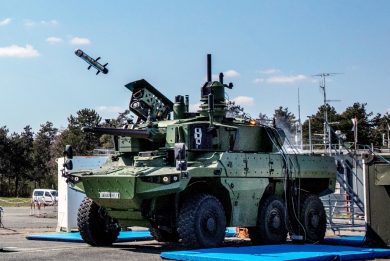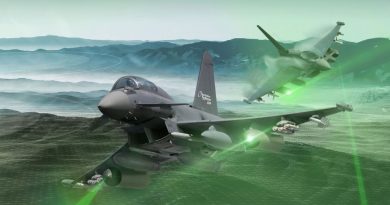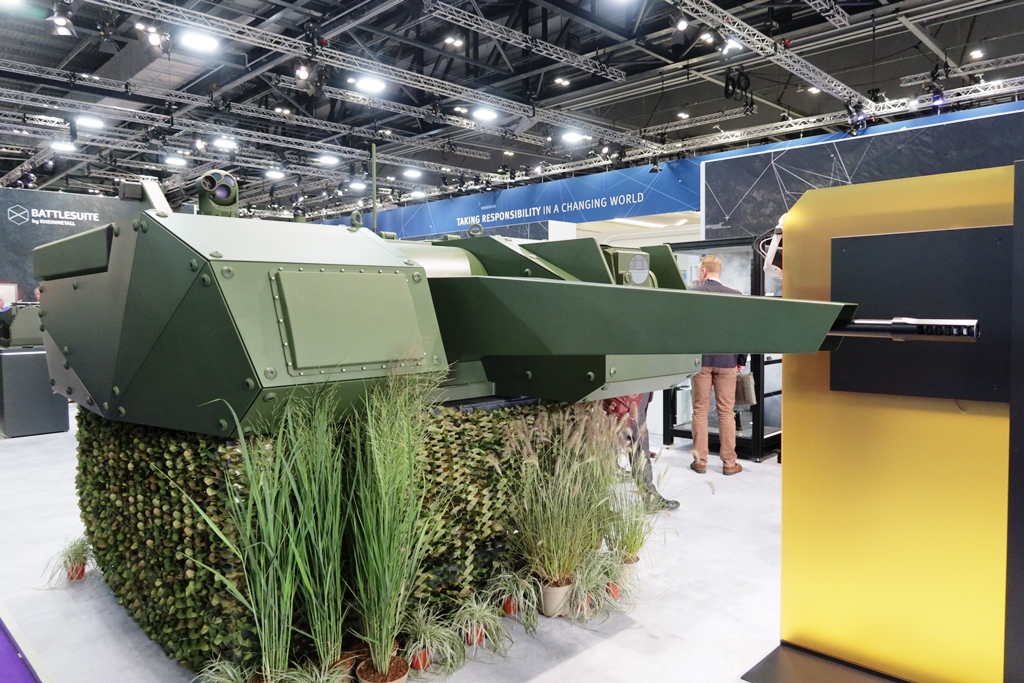
DSEI 2025 – Rheinmetall CT-025 turret, the KBA 25×137 mm cannon is back
In the Cold War era the 25×137 mm calibre was the most widely used on western infantry fighting vehicles, its rounds being able to penetrate the armour of their equivalents belonging to Warsaw Pact armies. Improved armour protection for IFVs is leading to an increase in cannons’ calibre, many countries shifting to the 30×173 mm, the 35×228 mm or even the 40×255 mm cased telescoped ammunition. The advent of new threats, such as FPVs and loitering munitions, and of new rounds, is however bringing back the KBA to the forefront, Rheinmetall unveiling at DSEI its CT-025 unmanned turret
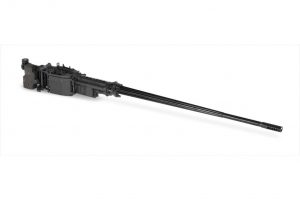
When visiting Rheinmetall Italia a few months ago EDR On-Line the renaissance of the 25×137 mm calibre was among the topics that were discussed. As said previously, around three years ago, the dual, belt-feed KBA was nearly abandoned, as most new IFV programmes were heading towards bigger calibres. The Russia-Ukraine war and the appearance of flocks of small and dangerous flying objects over friendly troops might well bring back the 25 mm into the fray. In some way the gun originates from the AR15, as it is based on the same gas-operation principle with a rotating bolt head, the designer of the two being Eugene Stoner. The development on the US gun advanced in parallel with that of the 25×137 mm ammunition, led by Swiss-based Oerlikon-Bührle. In the late 1960s the Swiss company acquired the licence for what was then known as TRW-6425, TRW being the company leading the cannon development. In the end it was in Europe that the new cannon was fully developed becoming the KBA. The first customer was the Royal Netherlands Army, which installed it in the turreted version of its then new YPR-765 infantry fighting vehicles. Fifty years later Rheinmetall Italia brings the KBA back on the market with new capabilities.
Among the advantages the company mentions the easy integration; this is due to its low mass, 112 kg for the complete cannon, its reduced recoil, the most recent versions manage to absorb 50% of the recoil, and the IASD (Instant Ammunition Selection Device) that allows immediate and easy switch from one type of ammunition to the other. The latter is particularly important as it allows to immediately adapt to the mission, which nowadays can be ground-to-ground, against light armoured vehicles and other land targets, or C-UAS, against incoming drones, FPVs or loitering munitions. The C-UAS use is currently a major marketing item, the KBA being proposed together with the ME 327 round, a 25×137 mm HE ammunition fitted with a proximity fuse produced by MES, an Italian company based in Rome. Another feature of the KBA which is underlined by Rheinmetall Italia is the capacity to adapt the rate of fire to the mission from single shot to rapid single shot, 175 rpm, to full auto, up to 650 rpm in the latest generation weapon, combat range being up to 2,700 metres.
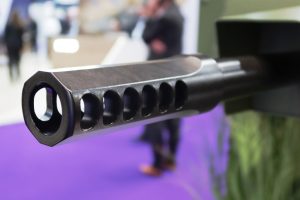
The cannon, which is fitted with an 80-calibre barrel (87 with muzzle brake), is qualified for all 25×137 mm ammunition such as full-calibre HEI, HEI-T, TP, TP-T and FAP, and sub-calibre FAPDS-T, APFSDS-T and TPDS-T. Depending on the type, the projectile mass varies between 150 and 180 grams, and the muzzle velocity between 1,100 and 1,400 m/s, flight time at 2,000 metres being between 1.57 and 3.30 seconds. According to the company a 25 mm APFSDS round can penetrate 90 mm of rolled homogeneous armour (RHA) versus a 30 mm round which can penetrate 130 mm at the same distance.
At DSEI Rheinmetall introduced its new CT-025 unmanned modular turret, which is armed with the KBA cannon, this weapon giving it the dual role that the company considers key for relaunching this weapon on the international market. The fact that the CT-025 is designed to cope with aerial threats is clear when considering the sighting system; this is the SEOSS320, which is optimised for air defence due to its angular velocity and stabilisation. With an elevation range of -13°/+70°, it is fitted with a CMOS colour day camera with a 2464×2056 resolution, a cooled MWIR thermal imager with a 1024×768 sensor, and a laser rangefinder with a range in excess of 12 km.
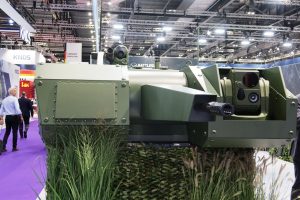
Two hatches on top of the turret allow reloading the two magazines, each containing a minimum of 125 rounds. The turret is based on an open, modular digital architecture, derived from that adopted on the Lance turret, which makes it fully compatible with Rheinmetall Battlesuite, the company AI-supported solution allowing maximum efficiency and resilience, as well as full modularity, ensuring an easy adaptation to customers’ needs. The configuration seen at DSEI is therefore only an example, the CT-025 on exhibition being a system demonstrator, which is being used for development purposes.

The gunner’s sight was located on the left, with the main gun in central position, while at the front, on the right side, the antenna of the Hensoldt Spexer 2000 radar was visible. On top of the CT-025 an RCWS armed with a Dillon M134D minigun in 7.62×51 mm calibre was fitted for self-protection, the sighting suite being part of the SEOSS200 family. On the right side a missile canister was visible, which contained an MBDA anti-drone missile.
EDR On-Line understood that the CT-025 without weapon and ammunition has a mass of around 750 kg to which we must add the 112 kg of the KBA, and that of ammunition, a 250 rounds load mass being around 125 kg, for a total short of 1,000 kg. This will allow to install it on light armoured vehicles.
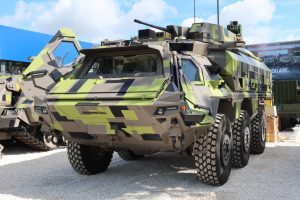
According to information gathered at DSEI, Rheinmetall aims to install its CT-025 turret on the Korsak, the new German Army reconnaissance vehicle that should at least partly replace the Fennek; that said, according to reliable sources the Korsak, which will be based on a Piranha 6×6 platform, will be equipped with a derivative of the Mangart 25 turret developed by Valhalla to equip Slovenian Army JLTVs, also armed with the KBA 25 mm cannon. This solution was exhibited by Rheinmetall at Eurosatory 2024 installed on a Fuchs 6×6, the proposal for the Korsak programme by the Düsseldorf-based group. Considering that The KBA was also due to arm the LuWa (Luftbeweglicher Waffenträger), the airmobile weapon carrier that should have replaced the Wiesel among German airborne and mountain troops, however this programme has been stopped.
DSEI was the launch event for the CT-025, Rheinmetall looking for future light vehicles to fit with its new unmanned turret armed with its KBA cannon and its sights and fire control systems, widening its medium-calibre turret portfolio with a light dual-use solution.
Photos by Rheinmetall Italia and P. Valpolini

